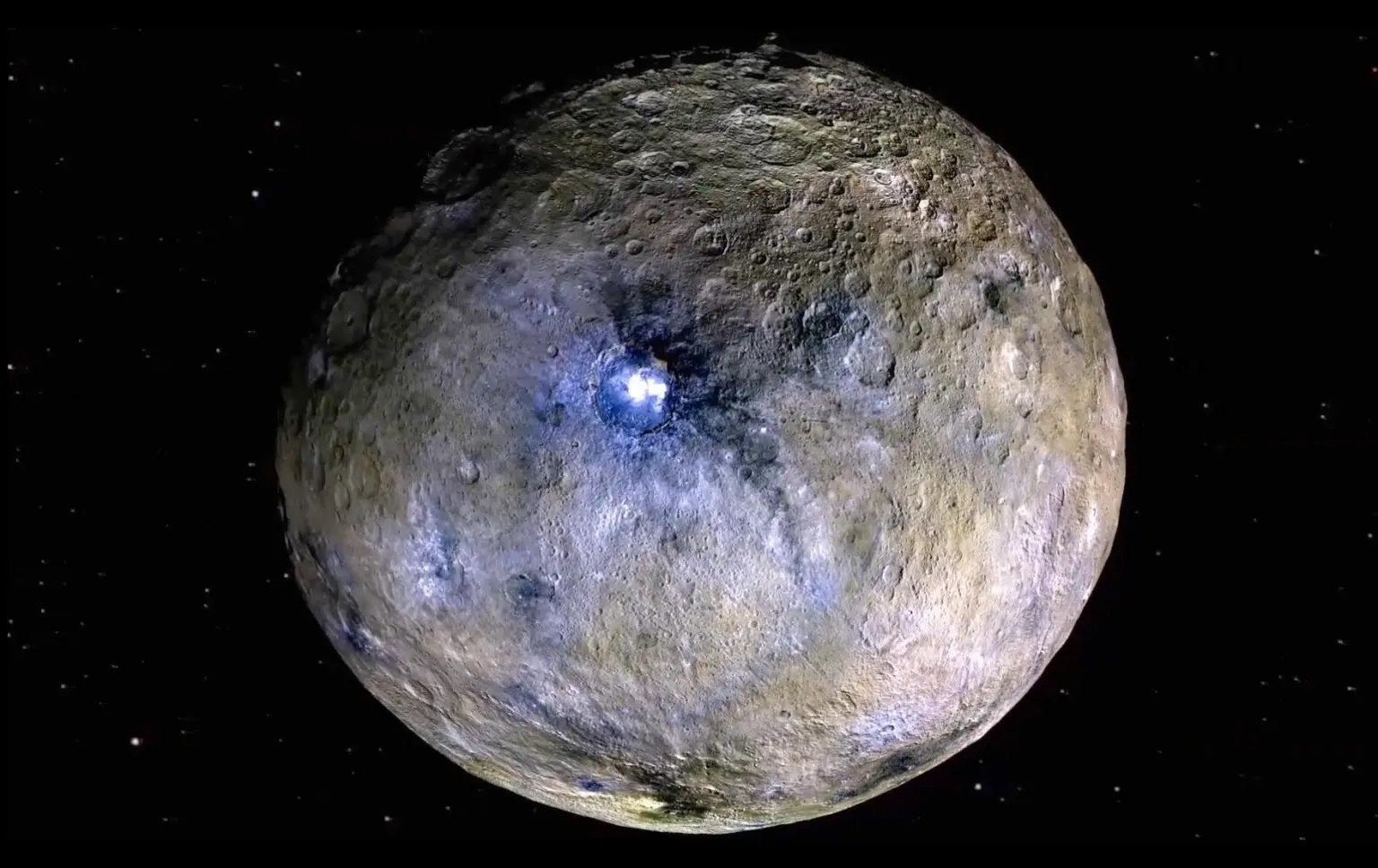(NLDO) - The largest object in the asteroid belt between Mars and Jupiter may have once possessed an ocean like Jupiter's "moon of life" Europa.
A new study based on data from NASA's Dawn spacecraft suggests the strange dwarf planet Ceres may be an ocean world .
According to co-author Dr. Mike Sori from Purdue University (USA), new analysis shows that Ceres, once thought to be a bare, barren rock, is more like a planet in nature.

Dwarf planet Ceres may have once been an ocean world - Photo: NASA
The dwarf planet Ceres is 950 km in diameter and is the largest object in the asteroid belt between Mars and Jupiter.
Although small, it contains complex surface features such as impact craters, volcanoes, and traces of landslides.
New research shows that Ceres' crust is nearly 90% ice near the surface, gradually decreasing to 0% at a depth of 117 km.
This strange structure could only be the remnants of a slowly freezing ocean, becoming richer in impurities as it solidified from the top down.
This finding contradicts previous beliefs that Ceres is relatively dry, with a maximum ice content of less than 30%. However, the fact that the ice concentrates at the surface and then gradually decreases downwards makes the team's 90% figure more plausible.
The authors conclude that Ceres was once an ocean world like Jupiter's moon Europa, which NASA believes could host a habitable underground ocean.
“As that muddy ocean freezes over time, it creates an ice shell with some rocky material trapped inside,” Dr. Sori explains.
To make the argument, the authors used computer simulations to model the expansion of impact craters on the dwarf planet over billions of years.
These simulations also show that Ceres's ice- and rock-rich ocean has little to no flow, which would contribute to its rapid freezing as the environment in the solar system gradually changed over time.
According to Dr. Sori, the most exciting thing is that we now have a frozen ocean world quite close to Earth, convenient for spacecraft to access and take samples.
Studying ancient water-rich worlds could help explain much about the evolution of objects in the solar system — including Earth — as well as the origin of life.
Source: https://nld.com.vn/mot-the-gioi-dai-duong-an-minh-giua-sao-hoa-va-sao-moc-19624100111444816.htm



































































































Comment (0)